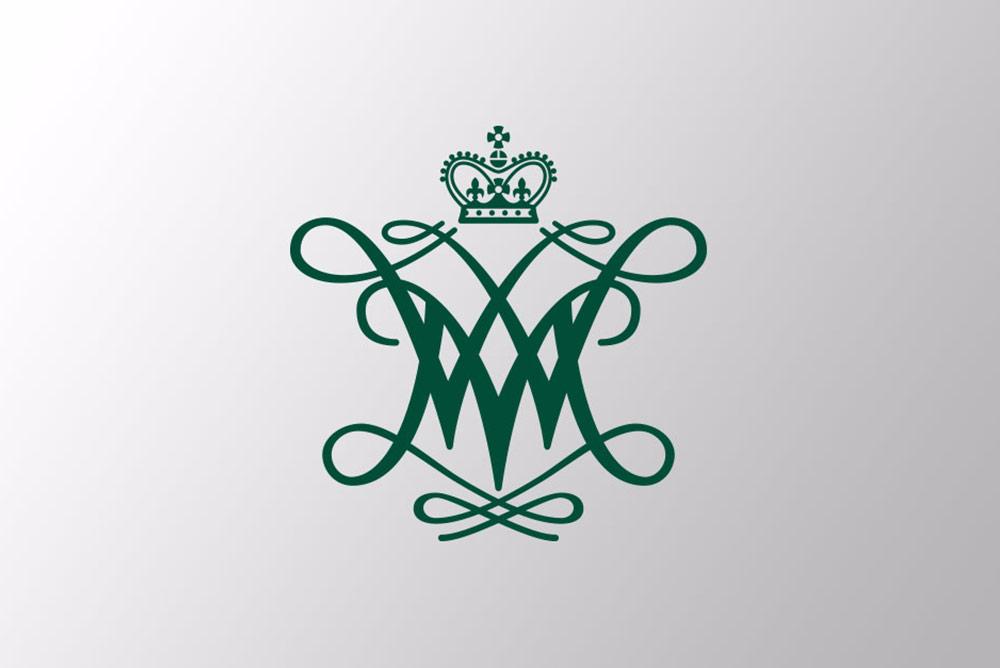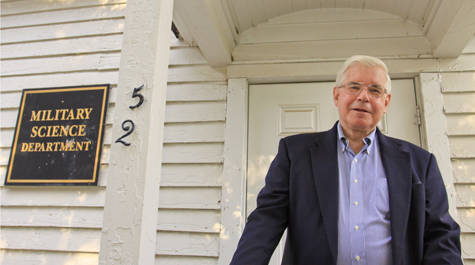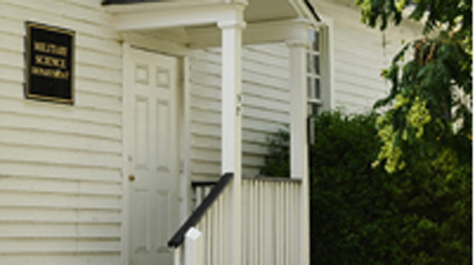英语教授迈耶斯揭示了学院过去的新细节
特里·迈耶斯(Terry Meyers)坐在车里,准备开车回家吃午饭,把狗放出去。七年前,他做了一个决定,这个决定揭示了威廉玛丽公司18世纪历史上一段令人震惊而重要的历史,这段历史被完全忽视了。
迈耶斯现在是学院的英语教授,他发现了他认为是布雷学校的建筑,由布雷博士协会资助,这是一个18世纪的伦敦慈善机构,致力于对英国殖民地自由和被奴役的黑人进行宗教教育。布雷学校从1760年到1774年在威廉斯堡存在。
迈耶斯的研究指出,现在位于乔治王子街524号的一个建筑,就在威廉玛丽大学主校区的边缘。这座建筑经历了许多结构变化,现在是学院军事科学办公室的所在地。如果他是对的,迈耶斯将取得历史性的成功,正如他最近在《英国圣公会和圣公会历史》杂志上发表的文章所解释的那样。
迈耶斯在他的AEH文章中写道:“如果布雷学校所在建筑本身的证据令人信服,那么这座建筑显然是美国现存与黑人教育有关的最古老的建筑。”
只是没有人能完全确定。证据指向这个方向,学者们的共识是,迈耶斯的研究虽然不是结论性的,但很有说服力。
但正如保护专家丹尼尔·库尔特·阿克曼(Daniel Kurt Ackermann)在2009年为学院撰写的一份报告中所总结的那样,“除非有进一步的证据出现,否则不可能确定布雷学校在威廉斯堡的确切位置。”
布雷学校将接待多达30名自由和被奴役的黑人儿童,他们被教导阅读和写作,女孩们还被教导缝纫。除了每天的课程,他们还会去格洛斯特公爵街的布鲁顿教区教堂做礼拜。迈耶斯在杂志上发表的这篇文章只是众多主要媒体报道中最新的一篇。《高等教育纪事报》(Chronicle of Higher Education)去年春天发表了一篇报道,随后《华盛顿邮报》(Washington Post)也发表了一篇长篇特写。迈耶斯的发现背后的故事是曲折的,包括一位受人爱戴的国父,一个身份不明的奇怪案例,以及一所南方大学在努力解决与奴隶制有关的历史时,以学术方式审视自己的良心。寻找布朗大厅
It began when Meyers, a 40-year teaching veteran with a penchant for 19th century Williamsburg history, tried to locate a Brown Hall. It was not the Brown Hall that stands today on Prince George Street, but an earlier structure on the same site described in a book entitled Williamsburg Facts & Fiction: 1900-1950 as having been owned by a Dudley Digges and moved from its original location at Prince George and Boundary.
That was news to Meyers, who knew of a Dudley Digges who had been a Revolutionary War patriot and had resided in a now-famous restored home in Yorktown. Meyers asked two sources he valued about this other Digges House supposedly on campus. It was news to them, too.
Meyers kept exploring, and found two other written references to a Digges House in Williamsburg. The memoir of a man who grew up in 19th century Williamsburg actually described the cottage. And a Flat Hat story from 1930 found in Swem Library’s Special Collections Research Center mentioned the house as having been moved to Prince George Street.
But no house along Prince George Street seemed to resemble an 18th century cottage. Had it been torn down? Was there anything at all still to find?
Those were the questions nagging Meyers as he turned the ignition key and headed for home.
“I had decided to quit,” he admitted recently. “I said to myself, ‘If that move happened, the building must have been torn down.’ “
But the fact that he had three independent written references to the house ate at Meyers. He couldn’t let go.
Meyers combed through Colonial Williamsburg’s Special Collections at the Rockefeller Library, Colonial Williamsburg’s York County Project in the Department of Historical Research, and the archives in the Goodwin Building. He pored over files and microfilm of newspapers from William & 玛丽 and Williamsburg, Newport News, and Richmond. He screened college records, building files, and presidential papers at Swem Library, along with annual reports of the Methodist Woman’s Missionary Society. William & 玛丽 yearbooks and aerial photos only added fuel to his fire.
“I had help and advice from everyone, from reference librarians and archivists at the College and Colonial Williamsburg and historians at Colonial Williamsburg to Louise Kale (executive director of the Historic Campus),” Meyers said. “Even when I started working on the AEH article, I didn’t know enough. But I kept running into people who knew more than I knew, though none knew the whole story.”
Ultimately, he found that there were several men named Dudley Digges “running around” the Tidewater area in the mid-18th century. Two of them even seemed to have held the rank of Colonel, the patriot from Yorktown and, as Daniel Ackermann subsequently documented, a lesser-known Digges in Williamsburg.
It’s the latter Digges, Meyers asserts, who rented and then owned the home that served as the school, which he apparently subleased and then rented to the school mistress.
“There’s a lot of complexity,” Meyers said.
The Franklin connection
How there even came to be a Bray School in Williamsburg is a puzzle Meyers’ dogged sleuthing appears to have solved, and is chronicled in his AEH article.
In 1756, Benjamin Franklin came to Williamsburg on post office business. The faculty took the opportunity to award him the first honorary degree bestowed by the College. Franklin met the president of the school, Thomas Dawson, during his visit. Dawson’s interest in the religious education of blacks was well known, and would have resonated with Franklin, Meyers said.
But Dawson’s commitment to black religious education was shared.
Bishop Henry Compton, the College’s first chancellor, espoused Dr. Bray’s philosophy by challenging Virginia’s royal governors to “find out the best means to facilitate and encourage the conversion of Negroes and Indians to the Christian religion.”
In 1699, the College’s first president, James Blair, urged the Virginia General Assembly to encourage “the Christian education of Indians, negroes, and mulatto children.” The Assembly had earlier endorsed the Brafferton School’s educating American Indians, but refused Blair’s plea on behalf of blacks.
In 1740, professor William Dawson, later president of the College, was communicating with the bishop of London, attempting to secure “a collection of religious books to be approved of, by your Lordship, for the benefit of the Negroes and the Poor of this Colony.”
As a clergyman, William Dawson had overseen three schools for blacks in his parish. As president of the College, he looked forward to the establishment of another one in Williamsburg, Meyers said. He himself presided over Lenten instruction to students from the College, Indians, white indentured servants, and blacks – all in one classroom. And, the professor added, Dawson helped raise funds for a school in 玛丽land for religious education, including blacks, using the Great Hall for concerts and contributing himself about $1,000 in today’s money.
Meyers reports that in 1758, on Franklin’s advice, the Associates of Dr. Bray had funded a school for blacks in Philadelphia. It was very successful and in 1760, the Associates elected Franklin a member. This time, they told him that they wanted to open three schools for the education of blacks, and asked him to suggest locations.
Franklin offered New York and Newport, R.I., and then what must have been a shocker: Williamsburg, a southern city firmly embedded in the culture of slavery.
“I didn’t discover any new documents or manuscripts,” Meyers said. “Everything I worked with was already out there in print. But no one had ever put it all together to make a connection between Franklin’s visit in 1756 and his recommendation to the Associates four years later that Williamsburg be a site for a school.
“That’s when I began to realize that the college, astonishingly, had a track record in the 1740s and 1750s, through its presidents and faculty, of really being engaged in the religious education of slaves and free blacks. That’s what Franklin discovered and what drove the recommendation of Williamsburg and the Associates’ looking for an affiliation with the College.”
That’s a far different scenario than previously believed. It had always been accepted as fact that Williamsburg came to have a Bray School solely because of Franklin’s close friendship with a resident named William Hunter. Like Franklin, Hunter was a postmaster and a printer.
There should be no misunderstanding the motivation for educating slaves and free blacks, Meyers said. The men behind the movement were clergy who believed enslaved blacks needed to be baptized. In order to understand the tenets of Christianity, they had to be able to read and write. Almost none of the clergy were opposed to slavery, he said.
“Although William & 玛丽 was the first institution to concern itself with the education of blacks in America,” Meyers said, “there has to be a series of asterisks and footnotes to that claim.”
Meyers said his inquiries had intensified when he learned that the College owned two slave children, Fanny and Adam. Both attended the Bray School, Meyers said, but only after it was moved from its original location, where Brown Hall is today.
The Lemon Project
Meyers’ research is as timely as it is fascinating. A committee of faculty, staff, students, and community members is currently studying and exploring the role of race in the College's history as part of the Lemon Project, named for a slave the College owned in the early 19th century.
The initiative, launched following a resolution in April 2009 by the William & 玛丽 Board of Visitors, is a multiyear effort to better understand William & 玛丽's own connections to slavery as well as race relations at the College from the end of the Civil War to date.
“I think William & 玛丽 is going through a full examination of its conscience,” Meyers said. “We’re documenting what we’ve done – good, bad, or indifferent – and it’s nuanced. There’s good, and there’s bad, in our history of race relations. I think we are therefore out ahead of most southern universities. I think this process of historical investigation is the honest way to go. I think William & 玛丽 is doing it the honorable way.”
Meyers nods his head and laughs when someone suggests that the story of a professor of Victorian poetry discovering something that eluded untold scores of research historians defines the value of a liberal-arts education.
“It sometimes startles me how serendipitous and chancy the connections are,” he said, “but everything seemed to come together.
“The Washington Post story said something about Williamsburg being a place where the bones of history had been picked clean. A friend of mine saw that and said, ‘Terry, you’ve just proven that there’s still a bit more meat on those bones.’ ”


















